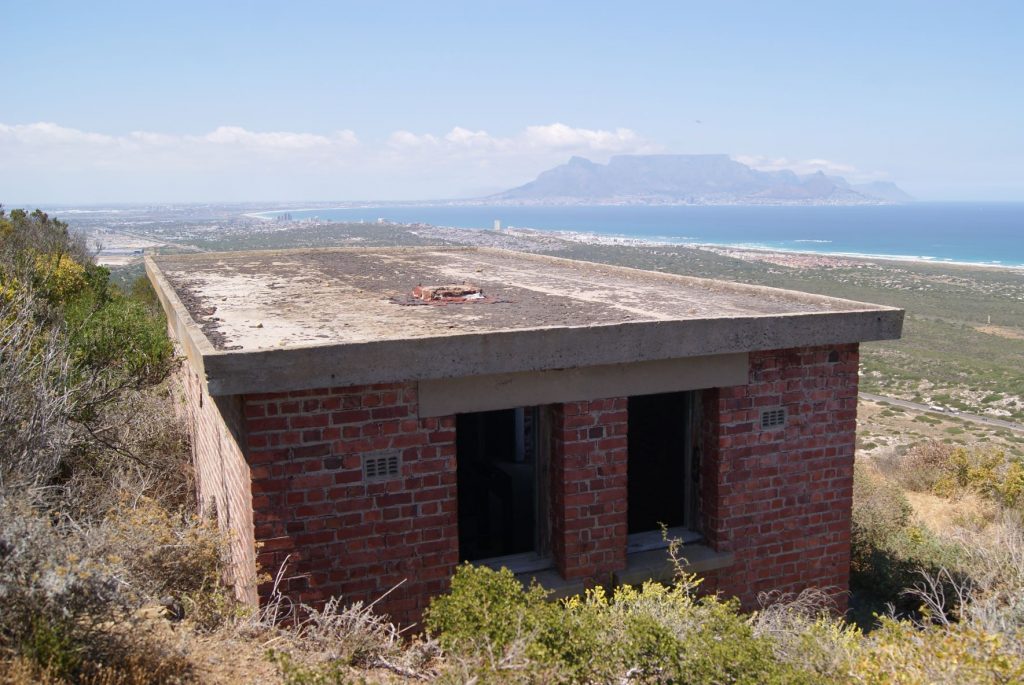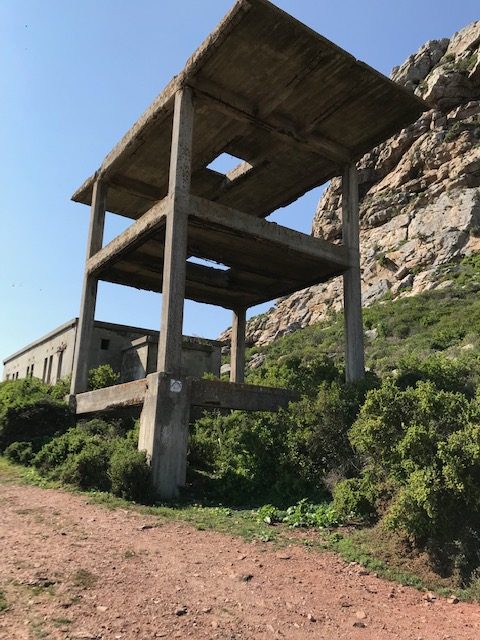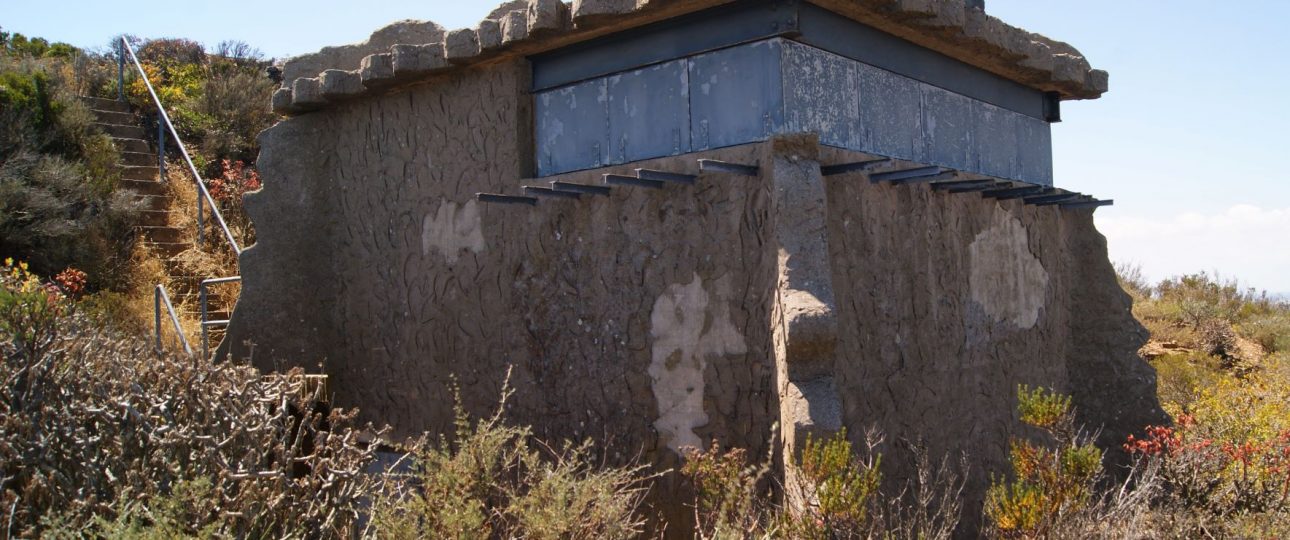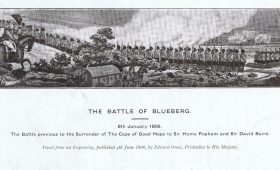When taking groups up to the top of Blaauwberg Hill I often get comments regarding the WW2 buildings on the west side of the hill. Most people have an idea that these are gun emplacements and unaware that they were lookout posts. They are also not aware that the lower building is an important example of how South Africa developed the use of radar for extending the range of observing the movement of traffic in the Atlantic Ocean.
The development of radar by Wits University during the Second World War was an important part of the defence of the naval bases in South Africa. Radar had been identified by Gen Jan Smuts as a requirement, having seen first hand how it had played a massive part in the Battle of Britain during 1940. After trials and implementation had been processed from Wits University, stations were built along the South African coast to increase the coastal defences from any nautical attack by enemy forces.

Last week I had the chance to look at another of these radar stations while visiting Elandsbaai on the coast north of Cape Town. Unfortunately, the station post, at the base of Baboon Point, is not in a good condition and looks to be used mainly by vagrants. It is accessible from the road though, and is worth a visit for any WW2 history enthusiasts. It consists of two concrete platforms and the openings through which the antanae would have been loctated can still be clearly seen. Next to this is the concrete mapping room, which would have been occupied throughout the war by a team of trained staff to monitor the information and relate this to grid positions on a map.

The station was built in 1944 (Artefacts.co.za) and so will have been used in the later part of the war. It would have monitored shipping north of Cape Town and Saldanha Bay and reported information through to the Filter Room at Cape Town. When in operation the structure would have had a large rotating grid above the top slab which was the receiving feature. The station would have been looking for any blips out at sea which would have indicated ships or U-boats. This information would then be given to the defence forces to despatch the necessary resorces to attend to the threat.
Looking at the deteriotating concrete and rusting reinforcing steel it would be unlikely that this Provincial Heritage building will last for many years to come.

For more information on the history of the radar stations and how South Africa developed them please see the following links to the Heritage Portal:
http://www.theheritageportal.co.za/article/south-african-radar-overstrand-world-war-ii
in addition for more information on the radar station at Elandsbaai click the link below for Artefacts.co.za:
https://www.artefacts.co.za/main/Buildings/bldgframes.php?bldgid=14628





